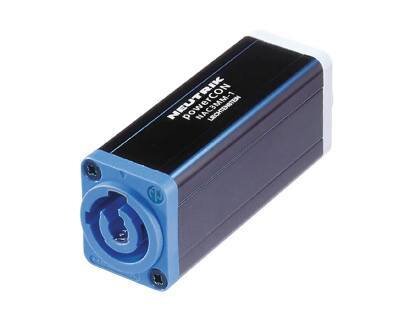MisterTim
Active Member
Hey guys,
So the recent trend for a lot of devices is to go to PowerCon for power. While the powercon connector is pretty nice and convenient, especially with passthroughs, it presents itself with significant electrical code problems.
It's UL recognized for:
Max Cable OD: 0.59"
Cable gauge: 14
Now, that presents a significant problem for those of us who are required by the NEC to use 12/3 SOOW for everything over 3' long. SOOW doesn't come smaller than 0.6" (I've found one that's 0.595", but haven't tried it yet).
I've talked to several electricians in the industry, all of whom have told me to stay away from powercon as much as possible, and use SJ for short adapter cables as needed. This is our current solution, but with how popular powercon is coming, there's been a lot of pressure to have lots of longer powercon cables for jumpering.
How do we approach this issue? Where is the compromise made?
edit: for clarity, I'm talking about the powerCON 20A connector. Interestingly, powerCON TRUE1 is rated for 12mm OD, but 12AWG wire size, but both are rated for 2.5mm^2 internal wire area. And other places in the product guide specify 12AWG as 1.5mm^2, which is REALLY wrong--12AWG is about 3.3mm^2. Ugh...
So the recent trend for a lot of devices is to go to PowerCon for power. While the powercon connector is pretty nice and convenient, especially with passthroughs, it presents itself with significant electrical code problems.
It's UL recognized for:
Max Cable OD: 0.59"
Cable gauge: 14
Now, that presents a significant problem for those of us who are required by the NEC to use 12/3 SOOW for everything over 3' long. SOOW doesn't come smaller than 0.6" (I've found one that's 0.595", but haven't tried it yet).
I've talked to several electricians in the industry, all of whom have told me to stay away from powercon as much as possible, and use SJ for short adapter cables as needed. This is our current solution, but with how popular powercon is coming, there's been a lot of pressure to have lots of longer powercon cables for jumpering.
How do we approach this issue? Where is the compromise made?
edit: for clarity, I'm talking about the powerCON 20A connector. Interestingly, powerCON TRUE1 is rated for 12mm OD, but 12AWG wire size, but both are rated for 2.5mm^2 internal wire area. And other places in the product guide specify 12AWG as 1.5mm^2, which is REALLY wrong--12AWG is about 3.3mm^2. Ugh...
Last edited:




